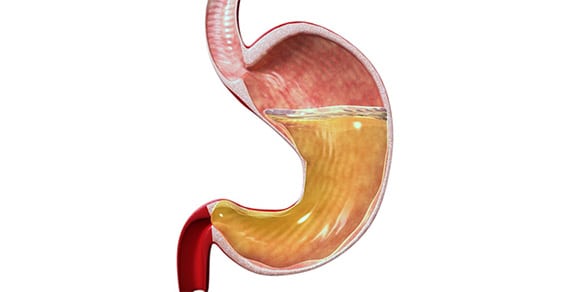Stomach Endoscopy

We provide patients with quality minimally invasive surgical care.
A stomach endoscopy is a procedure in which our doctor uses a small camera attached to a long tube to see the lining of your esophagus, stomach, and the first part of your lower intestine.
- This type of procedure is also called an upper gastrointestinal (UGI) endoscopy, and it is used as a diagnostic tool.
- Your doctor may recommend that you have this procedure before a weight loss surgery.
Preparing for a Stomach Endoscopy
The stomach endoscopy requires that your stomach be empty for the procedure. Our doctor may recommend that you avoid eating for 8 hours before the procedure. If you take any medications such as aspirin or anti-coagulants, our doctor may recommend that you stop their use for seven days before your endoscopy. You may also be asked to avoid smoking or caffeine use for one to two weeks before your procedure.
Why a Stomach Endoscopy Is Performed
Our doctors perform stomach endoscopies to check on the health of your digestive system. A healthy digestive system helps to ensure the success of your upcoming weight loss surgery. The stomach endoscopy helps our doctors to check for medical conditions such as inflammation of the esophagus and stomach. It is also used to check for conditions such as gastroesophageal reflux disease, narrowing of the esophagus, and enlarged or swollen veins in your esophagus. These conditions need treatment so that your weight loss surgery can be successful.

A stomach endoscopy is also used to check for ulcers, hiatal hernia and stomach blockages. In some cases, our doctors may perform a stomach endoscopy to check on the size and health of your stomach after a weight loss surgery. Our doctors may recommend this procedure after your weight loss surgery if your rate of weight loss is faster or slower than expected.
How a Stomach Endoscopy Works
A stomach endoscopy can be performed right in our doctor’s office. To perform a stomach endoscopy, you will be given an oral medication to help numb your throat. This makes it more comfortable to insert the endoscope. Our doctor may give you a sedative or a muscle relaxant so that you can rest during the procedure. You will be able to lay down on your left side during the endoscopy. A mouth guard will be given to you to protect your teeth from the tubing.
The endoscope is slowly inserted through your mouth and down your throat. Our doctors will be able to see the camera’s position by watching the video feed on a monitor. Once the scope is in your throat, you will be able to sit up. This air injection helps to move the camera into your stomach. Some air or water may be inserted into the tubing. This allows our doctors to get a better view of all of the parts of your stomach. Our doctor will take some pictures of your esophagus, stomach, and duodenum. The endoscope will then be slowly removed. The procedure takes about 30 to 60 minutes.

